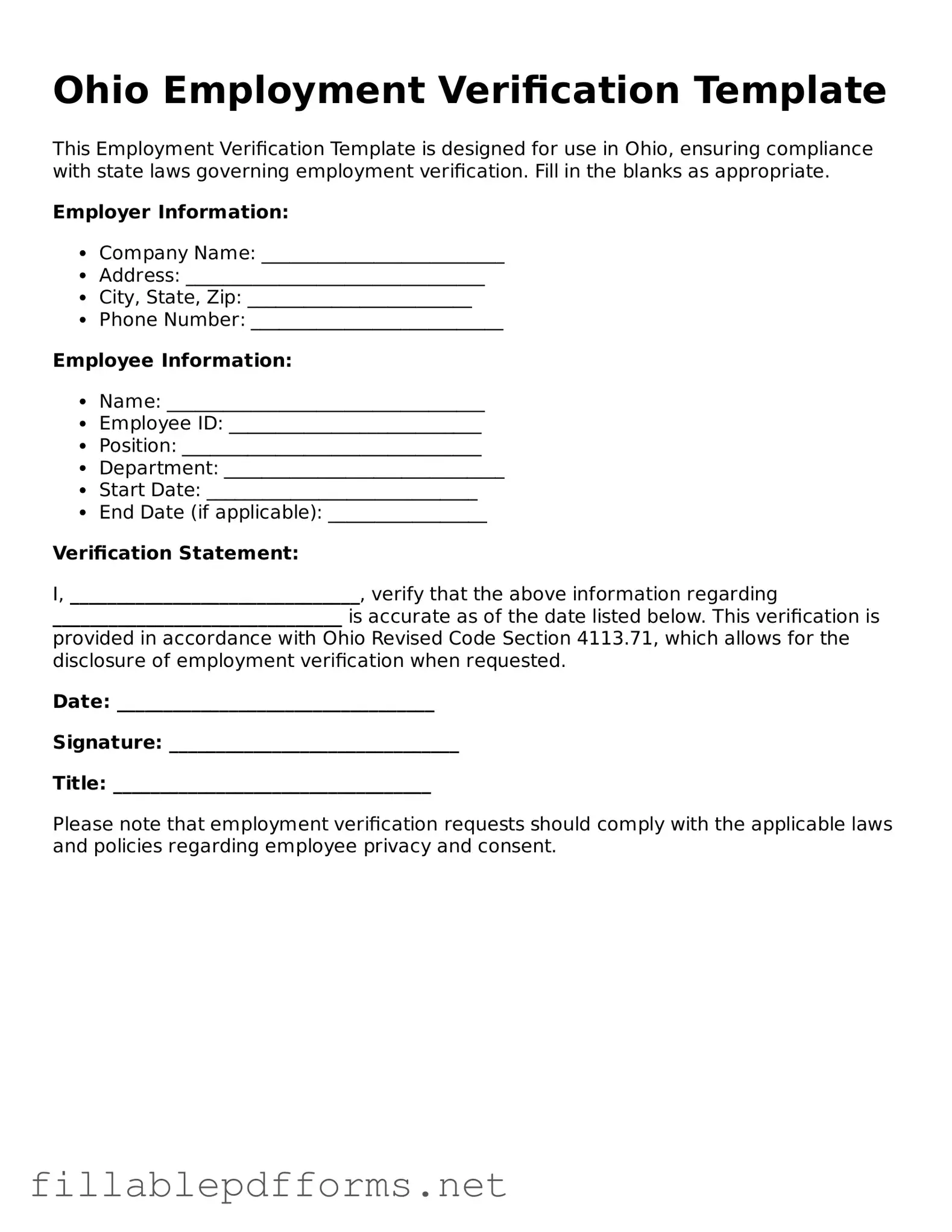The Ohio Employment Verification form plays a crucial role in the hiring process, ensuring that employers confirm the employment status of potential hires. This form serves as a formal request for verification of an individual's employment history, including details such as job title, dates of employment, and salary information. Employers often utilize this document to assess a candidate's qualifications and reliability, while employees may need it for various purposes, including loan applications or background checks. Understanding the importance of this form is essential for both employers and employees, as it helps maintain transparency and trust in the employment relationship. Additionally, proper completion and submission of the form can streamline the hiring process, making it more efficient for all parties involved. Familiarity with the requirements and implications of the Ohio Employment Verification form can greatly benefit both job seekers and employers alike.
